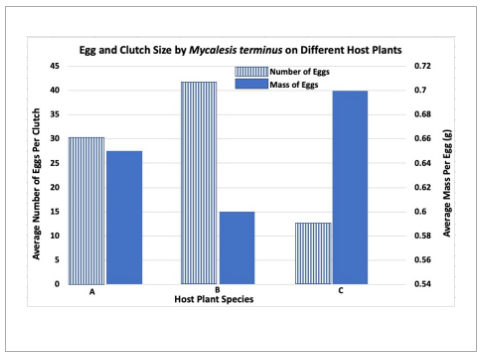for clarification which is shown in the graph, the darker blue on the bar graph shows the mass(size) of the eggs and the striped blue represents the number of eggs which is also depicted in the graph. as far as the host plants, its just showing 3 different plants the butterflies were on which is represented by the a, b, and c, also located on the graph. The right side of the graph (mass) represents blue and the left side (number of eggs) represents the striped blue. part a: Describe the relationship between egg size and clutch size shown in Figure 1. (This is not asking about host plants, just about the butterfly eggs.) part b: Describe one possible reason for the relationship between egg size and clutch size observed. (This is not asking about the host plants, just about the butterfly eggs.) part
for clarification which is shown in the graph, the darker blue on the bar graph shows the mass(size) of the eggs and the striped blue represents the number of eggs which is also depicted in the graph. as far as the host plants, its just showing 3 different plants the butterflies were on which is represented by the a, b, and c, also located on the graph. The right side of the graph (mass) represents blue and the left side (number of eggs) represents the striped blue.
part a:
Describe the relationship between egg size and clutch size shown in Figure 1. (This is not asking about host plants, just about the butterfly eggs.)
part b: Describe one possible reason for the relationship between egg size and clutch size observed. (This is not asking about the host plants, just about the butterfly eggs.)
part c:Describe one realistic difference between host plants that might be affecting the numbers and sizes of eggs that a female lays on these plants.

Trending now
This is a popular solution!
Step by step
Solved in 2 steps







